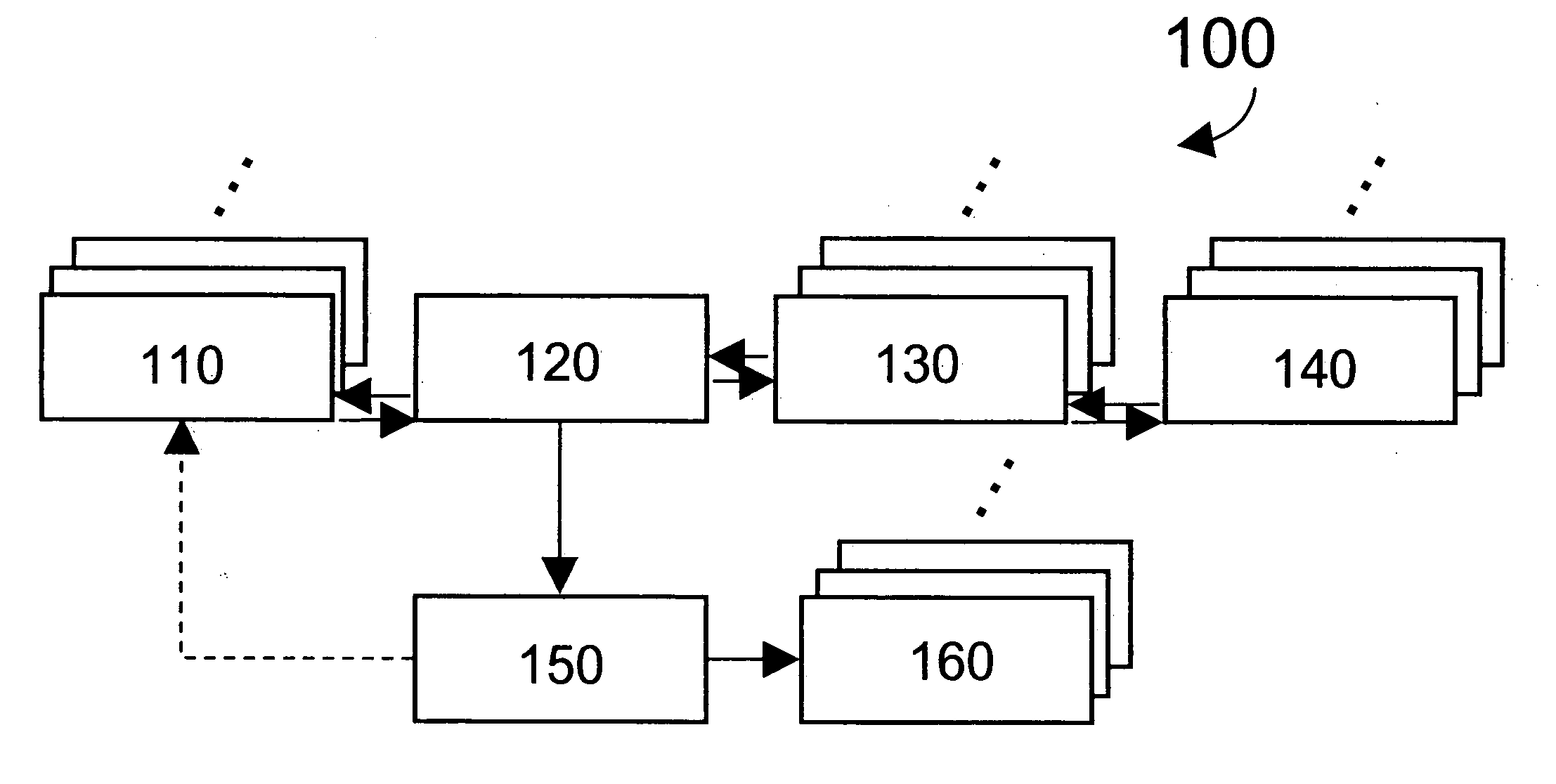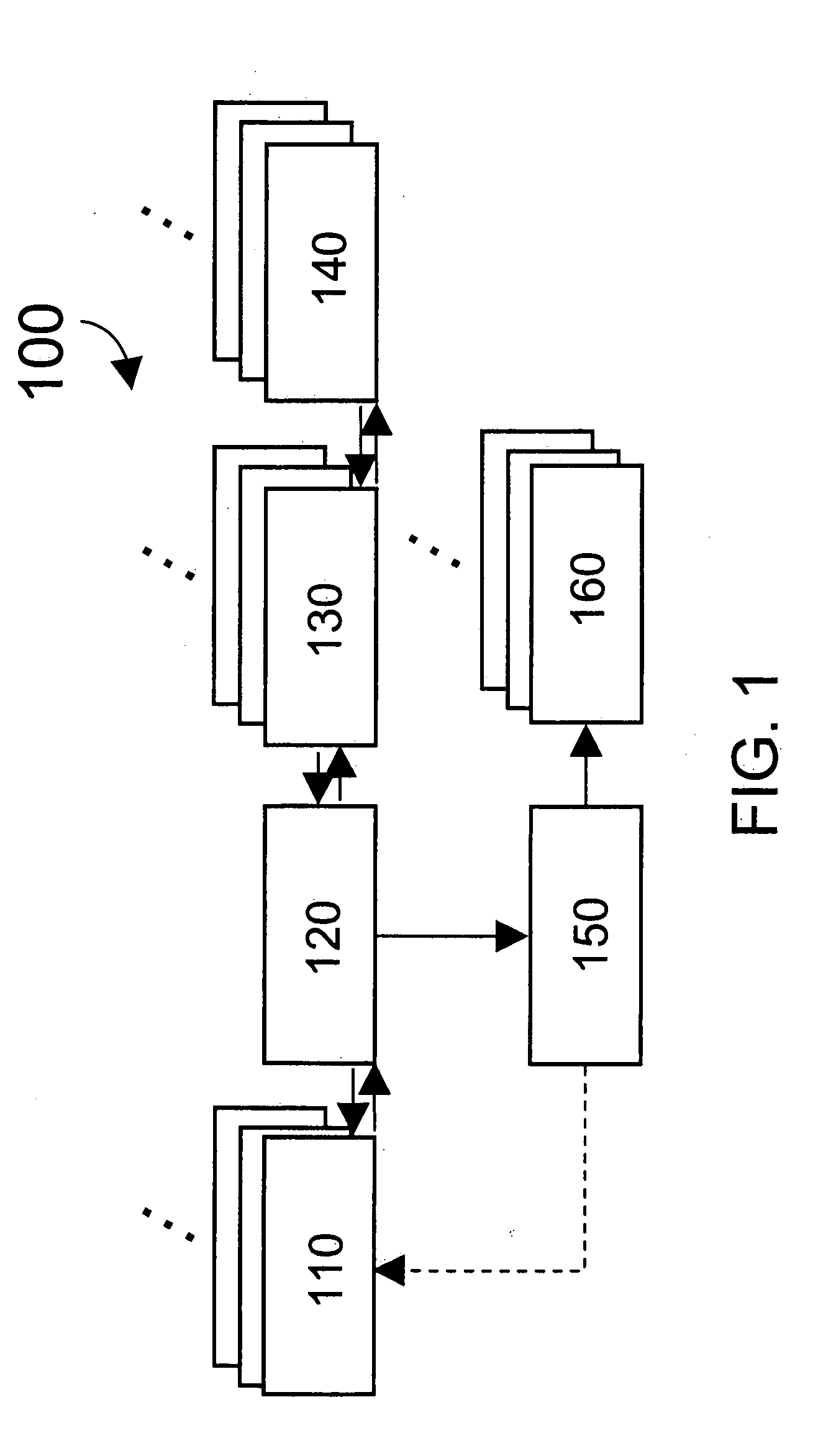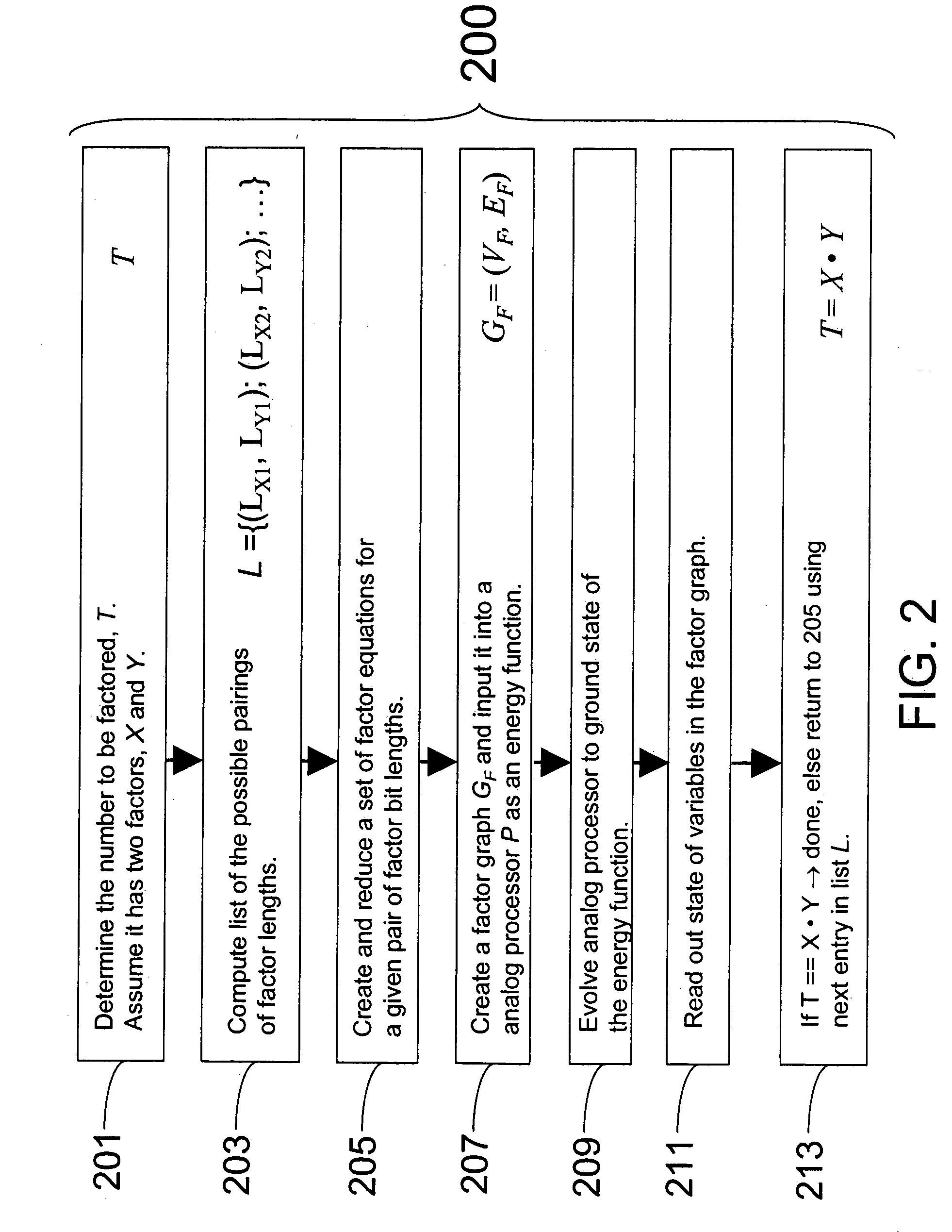Systems, methods and apparatus for factoring numbers
- Summary
- Abstract
- Description
- Claims
- Application Information
AI Technical Summary
Benefits of technology
Problems solved by technology
Method used
Image
Examples
Embodiment Construction
[0054]FIG. 1 illustrates the relationship between entities according to one embodiment of the present systems, methods and apparatus. A system 100 includes an input queue 110 holding an ordered list of numbers to be factored. A preprocessor 120 obtains a target number from input queue 110, and processes it.
[0055] Depending on the value of the target number, the preprocessor 120 may discard the number or create a set of factor equations and corresponding factor graphs. Such factor graphs are held in a queue 130 and they are supplied as input to a computing device 140 (for example, an analog processor including a number of quantum devices). The result returned by the computing device is sent to preprocessor 120 which, in turn, passes such results to a checker 150. The checker 50 verifies that the factors obtained are factors of the target number and that they are prime. If a factor is not prime, the checker 150 adds the factor to the input queue 110. If a factor is prime, it is place...
PUM
 Login to View More
Login to View More Abstract
Description
Claims
Application Information
 Login to View More
Login to View More - R&D
- Intellectual Property
- Life Sciences
- Materials
- Tech Scout
- Unparalleled Data Quality
- Higher Quality Content
- 60% Fewer Hallucinations
Browse by: Latest US Patents, China's latest patents, Technical Efficacy Thesaurus, Application Domain, Technology Topic, Popular Technical Reports.
© 2025 PatSnap. All rights reserved.Legal|Privacy policy|Modern Slavery Act Transparency Statement|Sitemap|About US| Contact US: help@patsnap.com



